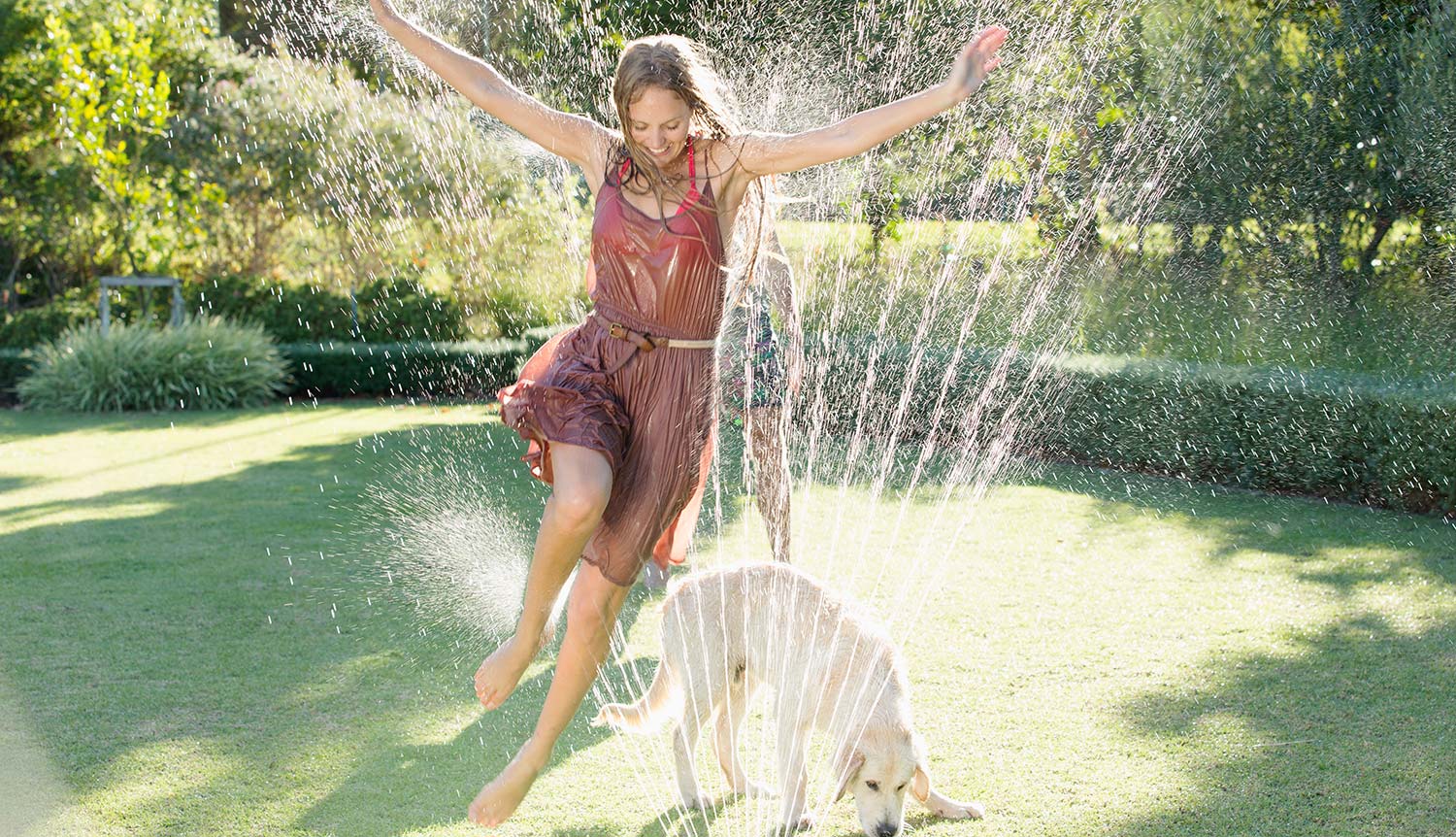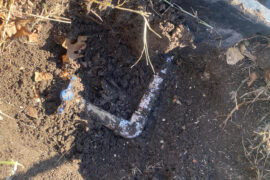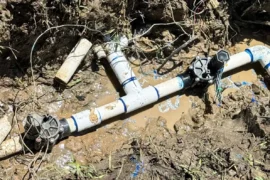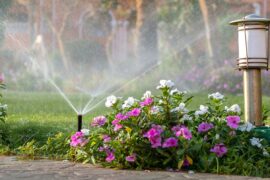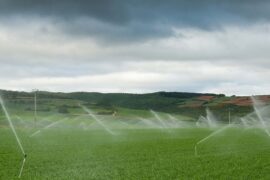Sprinklers are a fantastic way to keep your lawn lush and green, but if you have a four-legged friend, they might see these watering devices as new toys to play with, or worse, chew on. This can lead to damaged sprinkler heads and an inefficient irrigation system. Fear not! Here we’ll explore strategies and tips to dog-proof your sprinklers, ensuring that both your lawn and your pup stay happy and healthy.
Why Do Dogs Target Sprinklers?
Understanding why your dog might be inclined to attack or play with sprinklers is the first step towards finding an effective solution. Some common reasons include:
- Fun and Play: Dogs often see sprinklers as exciting playthings, especially on hot days.
- Boredom: A dog that is not sufficiently stimulated might turn to sprinkler heads for entertainment.
- Thirst: Dogs attracted to the water from sprinklers might be seeking fresh drinking sources.
Solutions and Strategies
Making Sprinklers Unattractive
An innovative and straightforward solution is the application of bitter-tasting sprays on sprinkler heads. These sprays, widely available in pet stores, are formulated to be non-toxic and safe for both your lawn and your dog. When your dog tastes the unpleasant flavor, it creates a negative association with the sprinklers. This method is most effective when consistently applied and can act as a strong deterrent, significantly reducing the likelihood of your dog chewing on or damaging the sprinkler heads.
Doggy Sprinklers and Splash Pads
To redirect your dog’s fascination with water away from your regular sprinklers, consider the option of dog-friendly sprinklers and splash pads. These special sprinklers and splash pads are designed with your dog’s playfulness and safety in mind. They provide an enticing alternative for dogs to indulge in their love for water play, especially during the warmer months. These devices typically combine features of both sprinklers and kiddie pools but without walls, allowing dogs the freedom to enter and exit as they please.
Physical and Behavioral Strategies
Designated Dog Areas
Creating a specific area in your yard for your dog to play, separated from the sprinklers, is a proactive approach to preventing damage. This doesn’t just mean cordoning off a corner of the lawn. It’s about creating an engaging and stimulating environment for your dog that they will prefer over the areas where your sprinklers are located. Consider incorporating elements that cater to your dog’s interests, such as a sandbox for diggers, a shaded area for loungers, or agility equipment for the more active pooch. Use physical barriers like decorative fencing or natural barriers like bushes to clearly demarcate this zone. This tactic not only protects your sprinklers but also gives your dog a sense of their own space, which can be beneficial for their mental and emotional well-being.
Training
Training your dog to stay away from sprinklers is an integral part of dog-proofing your irrigation system. Start with basic commands such as “leave it” or “stay away,” which are effective in redirecting your dog’s attention from the sprinklers. The key is to be consistent in your training efforts. Regular training sessions, coupled with positive reinforcement like treats and praise, can significantly enhance the learning process. Remember, patience is vital – training is an ongoing process and not a one-time task. It’s helpful to train in various scenarios, gradually introducing distractions to ensure your dog responds reliably regardless of the situation.
Supervision
Monitoring your dog when they are outside is crucial, especially in the early stages of training. Active supervision allows you to reinforce commands and intervene before your dog engages with the sprinklers. It’s not just about watching them, but also about engaging with them. Play with them, guide them, and use this time to strengthen your bond. If you notice your dog showing interest in the sprinkler system, gently redirect their attention to a more appropriate activity or area of the yard. This consistent supervision and redirection not only protect your sprinklers but also instill a sense of discipline and boundaries in your pet, which is beneficial for their overall behavior.
Expanding Protective Measures for Dog-Proofing Sprinklers
Burying Sprinkler Lines
Burying your sprinkler lines is an effective way to shield them from curious canines. Exposed lines are not just a temptation for dogs to chew or play with, but they can also be a hazard if your dog likes to dig. To implement this, you should consider the depth at which you bury these lines. They need to be deep enough to be out of reach of your dog’s digging zone, but also at a depth that ensures their functionality is not compromised. This depth will vary depending on the breed and size of your dog, as well as the type of soil in your yard. Additionally, when burying these lines, it’s crucial to use durable materials that can withstand both the pressure of the soil and the potential digging of your dog. Ensuring that these lines are well-protected will save you from frequent repairs and maintain the efficiency of your irrigation system.
Sprinkler Head Covers
Installing robust covers over your sprinkler heads is another practical solution. These covers act as a physical barrier between your dog and the sprinkler heads, preventing them from being chewed on or tampered with. When selecting covers, it’s important to choose materials that are strong enough to withstand your dog’s curiosity and potential rough play. These covers come in various designs, such as dome-shaped or cage-like structures, allowing you to choose one that best suits your lawn’s aesthetic. Moreover, these covers should be securely anchored to the ground to prevent your dog from dislodging them. Not only do these covers protect your sprinklers, but they also minimize the risk of your dog injuring themselves on the sprinkler heads.
Use of Repellents
Using non-toxic dog repellents is a gentle yet effective way to deter your dog from getting too close to your sprinklers. These repellents can create an invisible boundary that dogs are reluctant to cross. When choosing repellents, it’s important to opt for substances that are safe for both your dog and the environment. Natural options like vinegar or lemon juice are popular choices as they emit a scent that is generally unpleasant to dogs but harmless. These can be applied around the perimeter of your sprinkler system. However, it’s essential to reapply these solutions regularly, especially after rainfall or watering, to maintain their effectiveness. Additionally, you might consider ultrasonic devices or motion-activated sprinklers that startle the dog away from the area without causing harm. The key is to find a repellent method that works for your dog’s sensibilities and your gardening preferences.
Conclusion
Dog-proofing your sprinklers is a multifaceted approach that involves understanding your dog’s behavior, implementing physical barriers and deterrents, and engaging your dog in alternative activities. With the right strategies in place, you can maintain a beautiful lawn and a happy, healthy dog.
Remember, every dog is unique, and what works for one may not work for another. It may take a combination of these strategies to find the perfect solution for your furry friend and your sprinkler system. Keep experimenting, and don’t hesitate to seek professional advice if needed!

